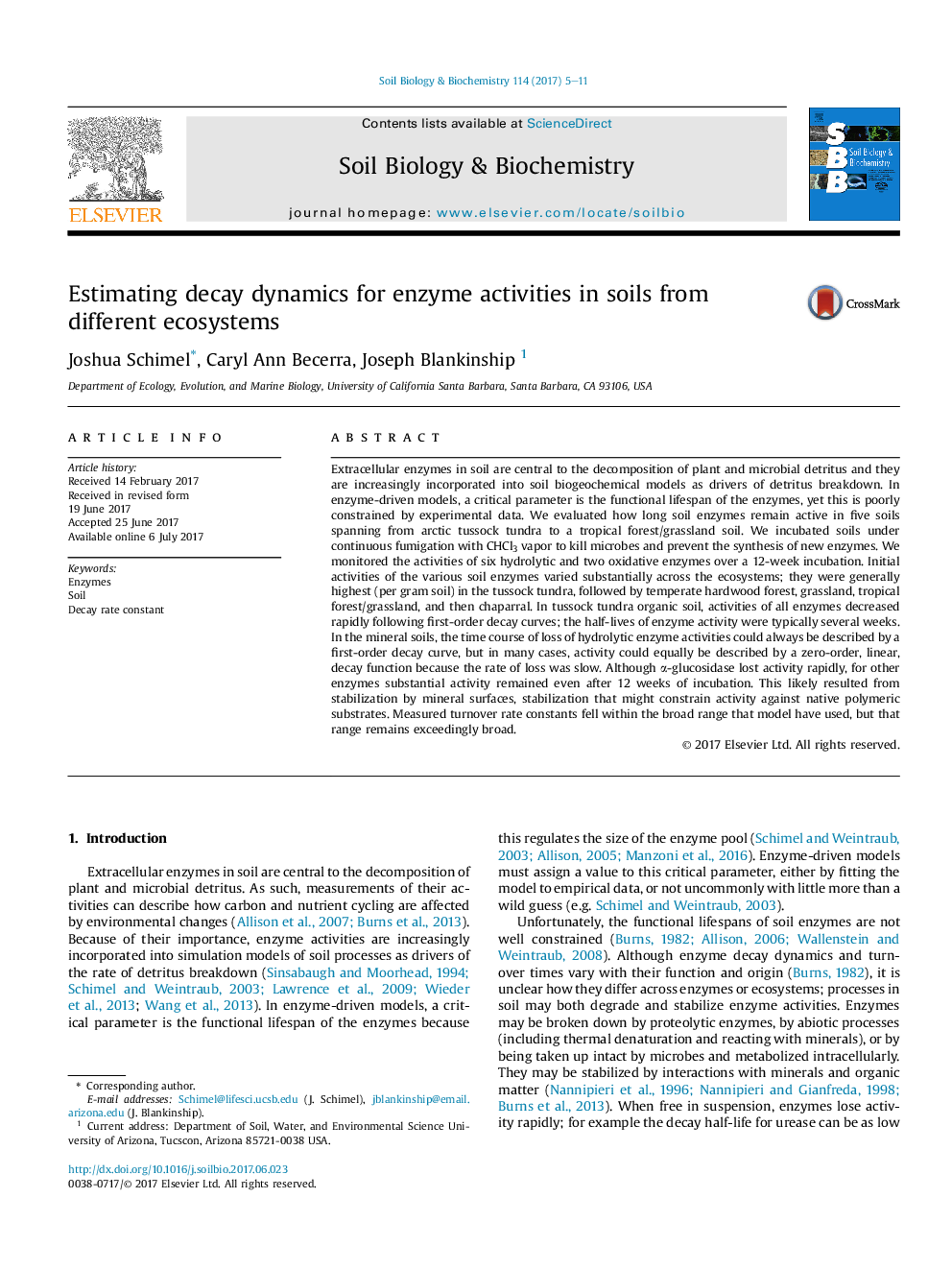| کد مقاله | کد نشریه | سال انتشار | مقاله انگلیسی | نسخه تمام متن |
|---|---|---|---|---|
| 5516301 | 1542570 | 2017 | 7 صفحه PDF | دانلود رایگان |
- Extracellular enzyme potential activities in decay over time in soils incubated under CHCl3.
- In mineral soils, activity loss was generally slow, with most enzymes persisting for 12 weeks.
- In a tundra organic soil, activities declined rapidly, with half-lives of roughly 2-3 weeks.
Extracellular enzymes in soil are central to the decomposition of plant and microbial detritus and they are increasingly incorporated into soil biogeochemical models as drivers of detritus breakdown. In enzyme-driven models, a critical parameter is the functional lifespan of the enzymes, yet this is poorly constrained by experimental data. We evaluated how long soil enzymes remain active in five soils spanning from arctic tussock tundra to a tropical forest/grassland soil. We incubated soils under continuous fumigation with CHCl3 vapor to kill microbes and prevent the synthesis of new enzymes. We monitored the activities of six hydrolytic and two oxidative enzymes over a 12-week incubation. Initial activities of the various soil enzymes varied substantially across the ecosystems; they were generally highest (per gram soil) in the tussock tundra, followed by temperate hardwood forest, grassland, tropical forest/grassland, and then chaparral. In tussock tundra organic soil, activities of all enzymes decreased rapidly following first-order decay curves; the half-lives of enzyme activity were typically several weeks. In the mineral soils, the time course of loss of hydrolytic enzyme activities could always be described by a first-order decay curve, but in many cases, activity could equally be described by a zero-order, linear, decay function because the rate of loss was slow. Although α-glucosidase lost activity rapidly, for other enzymes substantial activity remained even after 12 weeks of incubation. This likely resulted from stabilization by mineral surfaces, stabilization that might constrain activity against native polymeric substrates. Measured turnover rate constants fell within the broad range that model have used, but that range remains exceedingly broad.
Journal: Soil Biology and Biochemistry - Volume 114, November 2017, Pages 5-11
